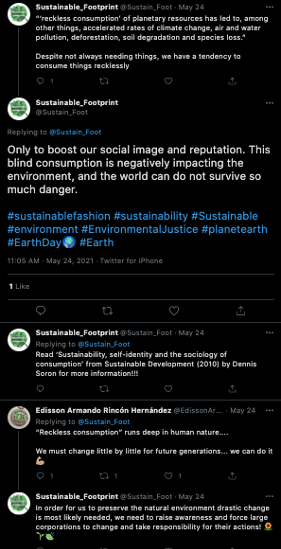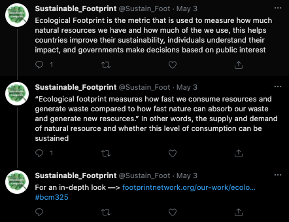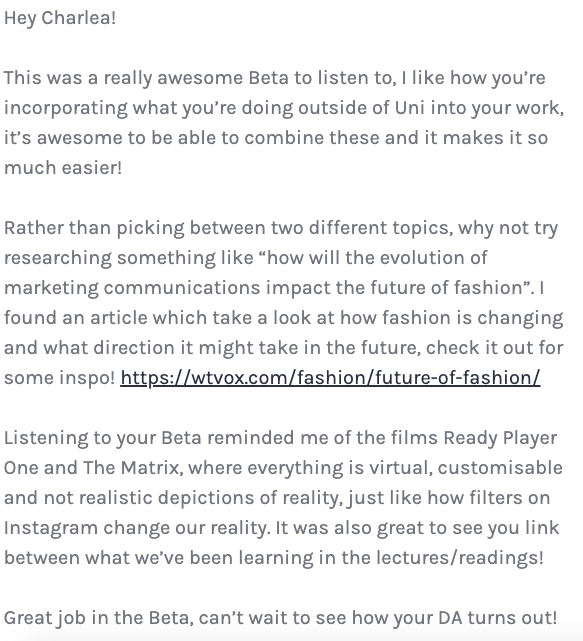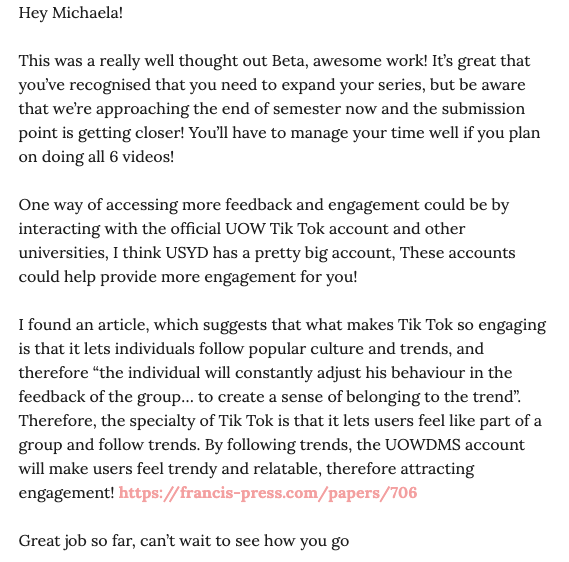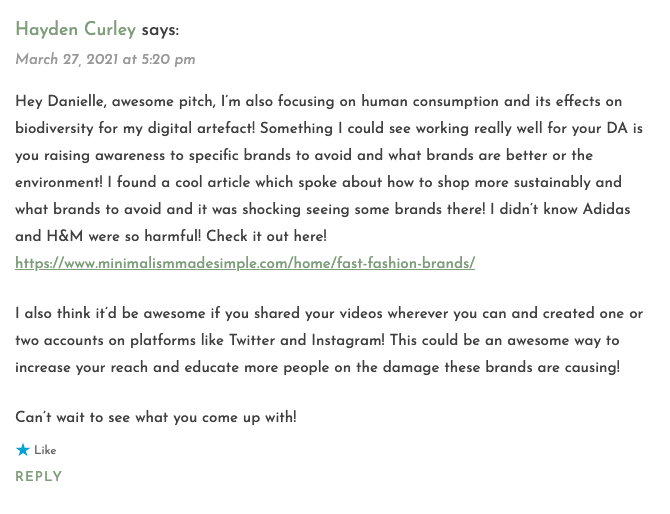Concept
Read the Pitch and Beta for my Digital Artefact first.
My Digital Artefact is an exploration of how human over-consumption will affect the environment in 10 years. Through my research, I explored the effects of over-consumption including climate change, environmental degradation, over-population and life expectancy. I chose to focus on the topic of human over-consumption as I had recently learnt about New York’s Climate Clock, a clock in Times Square that is counting down to the year 2028, at which point the damage from CO2 emissions becomes too much to repair, and the world cannot recover. After researching the topic, I decided over-consumption would be my topic and I decided my time period would be 10 years.
Audience & Utility
Initially, I had been targeting my Digital Artefact towards my fellow university students, as they are an group I am engaged with often, however when I started using hashtags on my posts, I found my target audience changed. By tagging my posts with hashtags such as #sustainability and #planetearth, I started to get engagement from the communities that frequent these tags. I struggled to get my engagement from students, so this change in audience has been extremely helpful, as these new groups are far more interested and willing to get involved in the conversation. Despite my audience expanding, I believe the utility remains unchanged – raising awareness about humanities’ impact on the environment by exploring how the future may look in 15 years.
Background Research
When developing my Digital Artefact, I was reminded of the Week 6 Lecture surrounding Futurists, and it stated, “futurists seek to know: what can or could be (the possible), what is likely to be (the probable) and what ought to be (the preferable)”. Using this quote, I knew that the best way to approach this was to be mindful of how the future isn’t set in stone and there are many possibilities to be aware of.
As stated in my concept, my DA was inspired by the Times Square Climate Clock, which is counting down to the time when global warming by carbon emissions reaches the point where the damage to the environment is irreversible and catastrophic. When researching, I also came across the Paris Agreement’s Climate Clock, another clock counting down to the same fallout, which instead shows 11 years left till carbon emissions are too much. Therefore, wanting to explore something similar, I chose human over-consumption’s environmental impact, and since one Clock currently has 11 years left on it (estimated to go off in 2033 as of March 2021), and the other shows 8 years, I chose ten years as my scope, to reflect this. However, upon further research, I discovered that the effects I was researching wont take effect until a few years after 2033, therefore, I amended my project’s scope to 15 years rather than 10.
Methodology
In my Pitch, I stated that I would be creating a Twitter account and an Instagram account. I started with Twitter, sharing information and articles about my topic and tagging all of my posts to increase my reach. I also created a profile picture/logo and a header image to make my profile more personable. When tweeting, I made most of my tweets threads, as I had more information to share than was possible in a single tweet, and this meant I could also use a large number of hashtags on each tweet, attracting more people to my DA.
Successes & Limitations
I found hashtagging to be quite useful, as before I began using them I had very little interactions, but experienced an increase in engagement from the sustainability community once I did. I am also quite satisfied with the logo and header image I created, as I believe they helped boost the image of my profile and made it more aesthetically pleasing.
Although it was strongly recommended by both my peers and my tutor that I should make an Instagram account, as there is a strong audience there that are interested in sustainability and social justice issues, I was unable to create the account, as I ran out of time due to my full schedule and three other classes. I also found it difficult to locate graphs and graphics to share, so I stuck to text posts.
Production Timeline & Trajectory
In my pitch, I showed a timeline that I planned on following, to make sure I stayed on track over the semester, however, it became difficult to stick to this schedule. Despite this, I believe if I were to continue this project, the next natural expansion would be the Instagram account I had planned on creating. This would also force me to make graphics, which would help benefit the Twitter side of my DA.
References
- Betts, R, 2016, ‘What will the world actually look like at 1.5°C of warming?’, The Conversation, https://theconversation.com/what-will-the-world-actually-look-like-at-1-5-c-of-warming-68763, accessed 25th May 2021
- ‘CLIMATE CLOCK’, https://climateclock.world, accessed 25th May 2021
- Human Impact Lab, 2021, ‘Climate Clock’, https://climateclock.net, accessed 25th May 2021
- Matthews, H, Peters, G, Allen, M, Forster, P, 2018, ‘The Climate Clock: Counting down to 1.5℃’, The Conversation, https://theconversation.com/the-climate-clock-counting-down-to-1-5-107498, accessed 25th May 2021
Appendix



